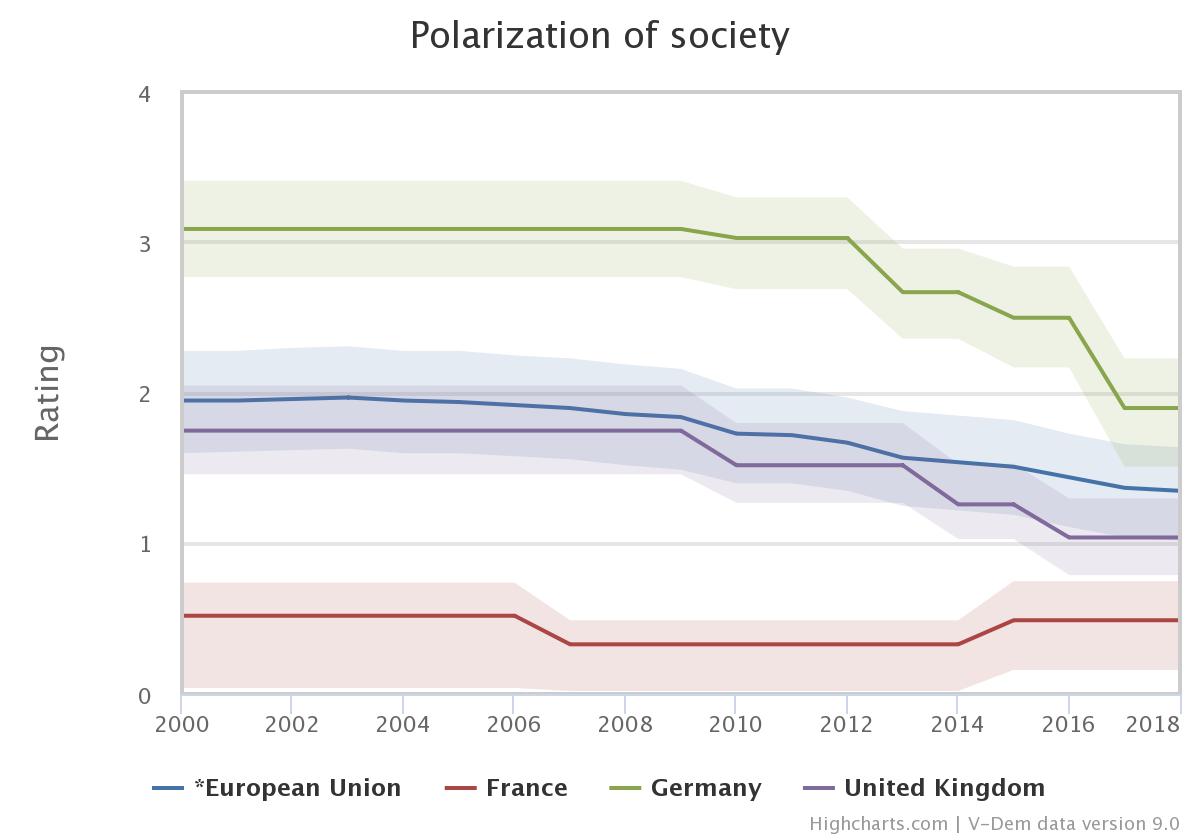Polarization in Europe
By: V-Dem Staff
Aug 30, 2019
Britain’s Prime Minister Boris Johnson has asked the queen to suspend Parliament just days after MPs return to work in September, greatly reducing the time they will have to stop a no-deal Brexit situation from transpiring on 31 October. This also marks two years of failed negotiations and increasing polarization over Britain’s decision to leave the EU. This week, we use the Variable Graph tool to compare the level of polarization in Britain to other European countries over the past 10 years.
The Polarization of Society indicator, developed in collaboration with the Digital Society Project, measures the extent to which differences in opinions result in clashes of views on major political issues. This is measured on a scale of 0 to 4, where 0 indicates serious polarization on almost all key political issues and 4 indicates virtually no polarization. This graph shows that Britain has become increasingly polarized and is currently more polarized than the EU average. In general, with the exception of France, EU societies have become more polarized in the 21st Century. While the situation in German society remains higher than the EU average, it has seen also seen a drastic drop in the last 10 years.
To learn more about V-Dem’s indicators and graphing tools, please visit v.dem.net.


